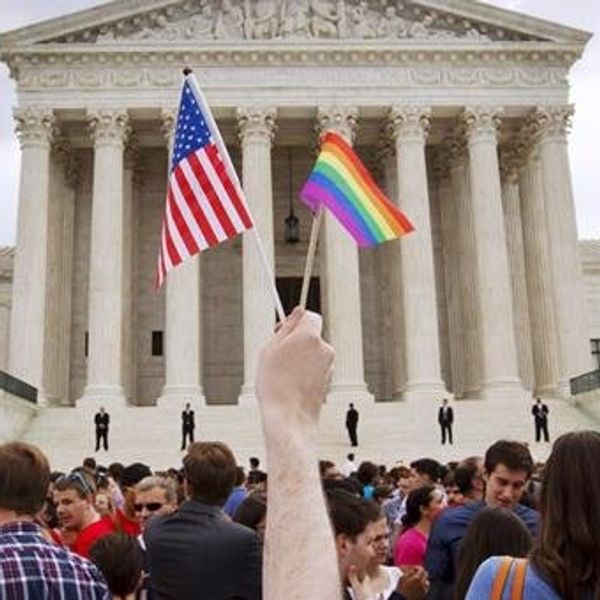The year is 1953. Across the United States, water fountains are being built and installed in public places. Both are manufactured in the same factory, delivered on the same truck, and installed by the same handyman. They are identical in every way.
Except for one thing.
A sign. A simple sign, installed above each of these identical water fountains. One sign reads: "Whites only." The other reads: "For Coloreds."
Now, if you asked any regular white person at any given time during this period why they thought it was ok to have two separate water fountains for two different races, they would probably have told you that it wasn't a racial thing. Not at all. It was a sanitary thing. I mean, of course they knew black people were people too, and the majority of them probably didn't even actively hate a black person; they met a black person once, you know, and they were just delightful, not sub-human at all. It's just, well, it's really for the safety of the children, you understand? I mean, why would they want their children drinking from the same fountain as a colored person's child? They were poorer, which means they had to have been dirtier, rife with any number of diseases that could have passed on to a white child by sharing a single fountain.
You understand, right? It wasn't about race, it was about the cleanliness of the fountain, you see?
Today, in any given history class, we learn about the civil rights movement in the United States, about apartheid and racism and segregation and we learn that it's wrong. We learn that fifty years ago, society was wrong in separating African Americans from white people, that racism is an idiotic institution born of ignorance and fear of anything different than we are. It was born of the belief that someone who looks different and acts different and speaks different must be viewed as an enemy, an aggressive enemy that could infect or attack us at any time. We learn that it was wrong to do this.
The year is now 2017. Across the United States, public restrooms are open for, well, the public. They are everywhere; restaurants, schools, public parks, buildings, hospitals. There are two different restrooms, and they are identical in every way; each has a sink, a toilet, a few stalls, tiled floors, and horrible recess lighting that makes your pores look much larger than they actually are. Yes, they are identical in every way.
Except for one thing.
A sign. A sign on the left restroom, which is for men. On the left, a sign that this is for women. Now normally, this isn't a controversial thing; it makes sense to separate restrooms by gender, right? So men use the men's room, and women use the women's room. No exceptions. Even if there is a person who was born a man but identifies as a woman, they must use the men's restroom, because it makes sense.
Now, if you asked any person on the street why they think it's ok to ban transgender individuals from the bathroom of their gender identity, most of them would tell you it isn't a transphobic thing at all. It's a safety thing. I mean, they're all for the LGBTQIA. They're all for the gays getting married and all that good stuff, but they have to draw a line at public restrooms, you know? I mean, what if there's a pervert out there just pretending to be a woman, and he goes into the women's restroom and assaults their little girl? I mean, that's all we're talking about here, after all; protecting the children!
So you understand, right? It's not about not accepting transgender people, it's about the safety of our children, you see?
Much like the civil rights movement wasn't about the right to use a water fountain, protecting trans rights is not about using the bathroom. It was never about the water fountain, and it's still not about the bathroom. It's about viewing people as just that: people. Not as something weird, or less than, or abnormal. Not as something foreign, or strange, or something to be feared and ostracized.
Protecting trans rights is about protecting human rights. No exceptions.





















